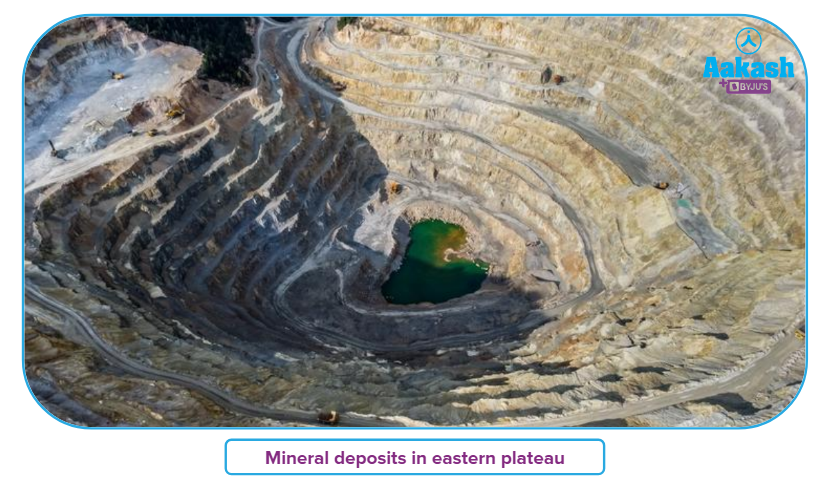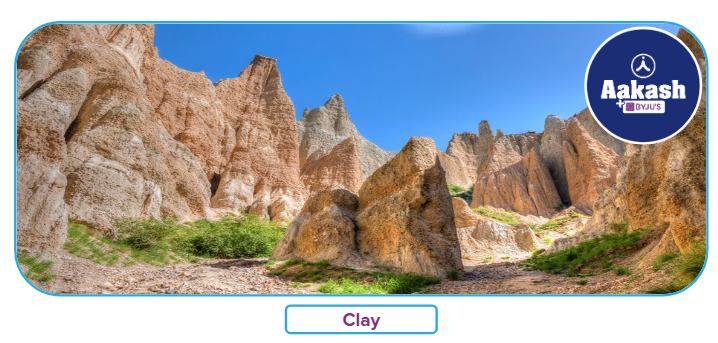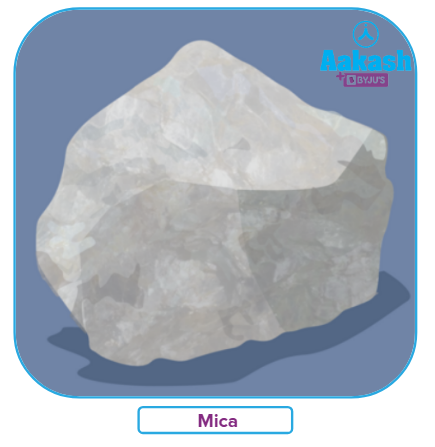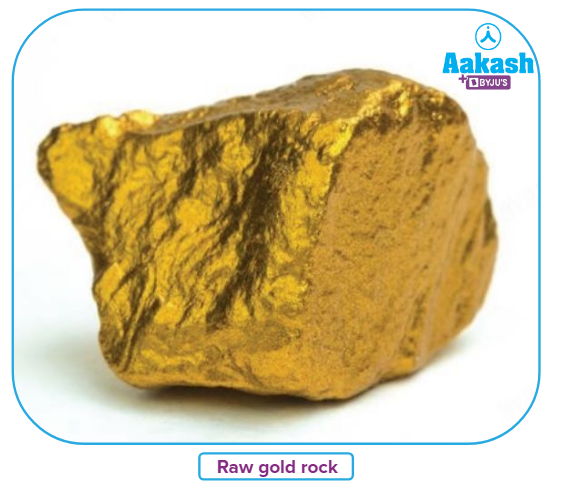-
Call Now
1800-102-2727
Mineral resources-Introduction, Types, Characteristics of Minerals, Distribution of Minerals, Major Mineral Regions of India, Uses, Practice Problems, FAQs
In this scientific world, you must be aware of technology and this technology has made our lives easier.
We have things surrounding us which are generated with the help of smart techniques. In our daily lives, we make use of materials such as silicon in computer chips, copper in wiring, coal for power production, steel pots, gold, silver, and gems for jewellery, as well as fuels like diesel and petrol, LPG for cooking, and lithium-ion batteries.
But do you know where these minerals came from and how many processes they underwent before they got to you? Ask your parents, they have seen that time when raw materials were directly used but it was difficult to obtain such raw resources.
Can you envisage what would happen if the earth's mineral resources run out? We won't be able to obtain various metals and fuels if the earth's minerals are completely depleted. There would be an energy crisis as a result of the fuel shortage, and transportation and other industries would cease to exist.
Mankind will revert to its primal, prehistoric state. Let's talk about this in order to learn more about these natural resources.

Table of content:
- What are Minerals resources?
- Types of Minerals
- Characteristics of Minerals
- Distribution of Minerals
- Major Mineral Regions of India
- Some important minerals
- Uses of Minerals
- Practice Problems
- Frequently asked questions-FAQs
What are Minerals resources?
The primary material foundation for socioeconomic growth is mineral resources. According to statistics, more than 95% of the energy used by humans, 80% of the raw materials used in industry, and 70% of the raw materials used in agricultural production come from mineral resources. Mineral resources are important to provide a nation with the foundation for industrial development. Fortunately, because of its diverse geological structure, India is endowed with a great range of mineral resources. It has more than a hundred minerals, of which about thirty are important from an economic standpoint. Coal, iron ore, manganese, bauxite, mica, and other materials are a few examples. However, there are insufficient amounts of petroleum and various nonferrous metallic minerals, particularly copper, lead, zinc, tin, and graphite.

Types of mineral resources:
Based on their chemical and physical characteristics, minerals can be divided into two primary categories: metallic and non-metallic.
Minerals are basically categorized in two ways:
- Metallic Minerals: Metallic minerals serve as a solid foundation for the growth of the metallurgical industry. This group includes materials that generate metal, such as iron ore and bauxite. Metallic minerals have an outward appearance of metallic lustre or shine.
Ferrous and non-ferrous metallic minerals are subcategories of metallic minerals.
- Ferrous: Ferrous minerals refer to all minerals that include iron. Examples of ferrous minerals include chromites, iron ore, and manganese. About three-fourths of the value of all metallic mineral production is made up of ferrous minerals. These minerals offer a solid foundation for the growth of the metallurgical industries, especially those producing iron, steel, and alloys. In terms of ferrous mineral reserves and output, India is in a good position.
- Non-ferrous: Iron-free minerals are referred to as non-ferrous minerals. Non-ferrous minerals include copper, bauxite, and others. Except for bauxite, India has little access to non-ferrous metallic minerals.
- Non-Metallic Minerals: Non-metallic minerals lack extractable metals in their chemical makeup and can either be of organic or inorganic origin. They are further divided into two groups, namely mineral fuel and other non-metallic minerals, based on their place of origin. India is blessed with several non-metallic minerals, but only a small number of them are significant from an economic standpoint. They are gypsum, phosphate, kyanite, sillimanite, dolomite, limestone, and mica. Many different sectors, including those that produce cement, fertilizer, refractories, and electrical items, employ these minerals.
- Fuel Minerals: Mineral fuels, such as coal and petroleum, are organic in nature and generated from buried animal and plant life. They go by the name of fossil fuels as well.
- Other Nonmetallic Minerals: Other non-metallic minerals, like mica, limestone, and graphite, are inorganic in nature.
Characteristics of Minerals:
A mineral's fundamental qualities include the following:
- The mineral Crystal structure is clearly defined.
- They have a definite chemical composition.
- They are naturally occurring.
- They are formed by inorganic methods.
- They are solid in nature.
A rock must exhibit at least three of these qualities in order to be considered a mineral.
- Other properties of minerals include their irregular spatial distribution.
- Mineral quality and quantity are inversely correlated, meaning that high-quality minerals are rarer than low-quality minerals.
- All minerals eventually become depleted. Geologically speaking, minerals take a very long period to produce, and they cannot be instantly replaced when needed.
Distribution of Minerals:
India has an uneven distribution of mineral resources. Mineral resource occurrences are linked to specific categories of geological structure.
- The majority of coal reserves are located in the Gondwana system.
- There are significant metallic mineral deposits in the Dharwad and Cuddapah systems, including copper, lead, zinc, etc.
- The Damodar, Sone, Mahanadi, and Godavari valleys contain more than 97 percent of the world's coal deposits.
- Petroleum reserves are found offshore of Mumbai high in the Arabian Sea, sedimentary basins of Assam, Gujarat. The Krishna-Godavari and Kaveri basins contain new deposits.
- Major non-metallic minerals found in the Vindhyan system include gypsum, calcium, limestone, and dolomite. In the ancient crystalline rocks of the peninsular plateau region of India, the majority of metallic minerals are found.
Major Mineral Regions of India:
Minerals may occasionally occur in isolated pockets here and there, but they are often concentrated in three large areas throughout India.
Area of the North Eastern Plateau:
- It includes the plateaus of Chotanagpur, Orissa, and eastern Andhra.
- Rich mineral reserves specifically used for metallurgy can be found in this area.
- Rich deposits of several minerals, particularly those used in the metallurgical industry, such as iron ore, manganese, mica, bauxite, limestone, and dolomite, are found in this region.
- Along the valleys of the rivers Damodar, Mahanadi, and Son, among others, this area possesses abundant coal reserves.
- Additionally, there are significant deposits of copper, uranium, thorium, phosphate, etc. in this area.

Area of the South-Western Plateau:
- This area, which spans the plateaus of Tamil Nadu and Karnataka, is abundant in non-metallic minerals as well as metallic minerals, especially iron ore, manganese, and bauxite.
- This area is home to all three of India's gold mines.
- However, Neyveli lignite is the only type of coal found in this plateau area.
- Kerala possesses bauxite clay, monazite, and thorium resources. Iron ore reserves exist in Goa.

Area of North-Western Region:
- From Gujarat's Gulf of Khambhat to Rajasthan's Aravalli Mountains, this belt stretches.
- The two main minerals in this belt are copper and zinc.
- Sandstone, granite, and marble are among the abundant building stones found in Rajasthan.
- Deposits of gypsum and fuller's earth are also abundant.
- The cement industry receives its raw materials from the dolomite and limestone found in this area.
- Other minerals are sparse and dispersed, with natural gas and petroleum making up the bulk of this belt's resources.
Some important minerals:
Iron ore:
Iron ore resources are fairly numerous in India, and the ore is of very high grade with an iron content of more than 60%. Haematite, magnetite, and limonite make up the three main forms of iron ore found in the nation.
|
Types Iron ore |
Iron content |
|
Hematite (red ore) |
68% |
|
Magnetite (black ore) |
60% |
|
Limonite (Yellow ore) |
35% -50% |
In the country's north-eastern plateau region, the iron ore mines are located near the coal deposits. The States of Odisha, Jharkhand, Chhattisgarh, Karnataka, Goa, Telangana, Andhra Pradesh, and Tamil Nadu contain over 95% of the world's iron ore deposits.

|
States |
Regions |
Important Mines |
|
Odisha |
Sundergarh |
Bonai |
|
Jhar |
Kiriburu |
|
|
Mayurbhanj |
Gurumahisani, Sulaipat, Badampahar |
|
|
Jharkhand |
Pashcimi Singhbhum |
Gua |
|
Poorbi Singhbhum |
Noamundi |
|
|
Chhattisgarh |
Bastar |
Dantewada, Bailadila |
|
Drug |
Dalli Rajhara |
|
|
Karnataka |
Chikkamagaluru district, shivamogga, Chitradurg Tumakuru |
Baba Budan hills and Kudremukh |
|
Ballari district |
Sandur- Hospet |
- The districts of Anantapur, Khammam, Krishna, Kurnool, Cuddapah, and Nellore are among those in Andhra Pradesh that have iron ore reserves.
- Additionally, the states of Rajasthan, Maharashtra, and Tamil Nadu contain some deposits. Particularly for export purposes, the mines at Bailadila, Rajhara, and Kiruburu in Chhattisgarh and Odisha are being developed.
- Although Goa's ore is of lower quality, it nevertheless makes an impressive contribution to the nation's overall production. From Mormugao Port, about all of Goa's iron production is shipped to Japan.
Manganese:
- Odisha, Madhya Pradesh, Maharashtra, Karnataka, and Andhra Pradesh are the key production regions. A belt extending from the Maharashtra districts of Nagpur and Bhandara to the Madhya Pradesh districts of Balaghat and Chhindwara has more than 78 percent of India's total manganese ore deposits.
- The largest producer of manganese in the nation is Madhya Pradesh i.e; accounts for 33% of all production nationwide.
- Sundargarh, Rayagada, Bolangir, Keonjhar, Jajpur, Mayurbhanj, Koraput, Kalahandi, and Bolangir are the significant mining regions.
- Another significant producer in the nation, Karnataka contributes 26% of the overall output and has mines in Dharwad, Ballari, Belagavi, North Canara, Chikkmagaluru, Shivamogga, Chitradurga, and Tumkur.
- Manganese, which is mined in the districts of Nagpur, Bhandara, and Ratnagiri, is another key mineral produced in Maharashtra.

Bauxite:
- A non-ferrous metallic material called bauxite is used to make aluminium.
- Laterite rocks are related to bauxite, which is typically found in tertiary deposits.
- Bauxite is widely distributed throughout peninsular India's plateaus and hill ranges, as well as in the nation's coastal regions. India has enough bauxite deposits to maintain its independence.
- Jharkhand, Maharashtra, Madhya Pradesh, Chhattisgarh, Gujarat, Karnataka, Tamil Nadu, Goa, and Uttar Pradesh all have significant reserves.
- Significant bauxite resources have been found in the Eastern Ghats of Odisha, Andhra Pradesh, Tamil Nadu's Salem, Nilgiri, and Madurai districts, and Uttar Pradesh's Banda area.
- The majority of India's bauxite is produced in Odisha.

|
States |
Region |
|
Gujrat |
Bhavnagar, Junagadh and Amreli |
|
Jharkhand |
Palamau, Ranchi and Lohardaga districts |
|
Chhattisgarh |
Surguja, Raigarh and Bilaspur in Amarkantak plateau |
|
Madhya Pradesh |
Mandla, Shahdol and Balaghat and Katni district |
|
Karnataka |
North-western parts of Belgaum district |
|
Maharashtra |
Kolhapur, Raigarh, Thana, Satara and Ratnagiri districts |
Copper:
- For the manufacture of cables, electric motors, transformers, and generators, copper is a crucial metal in the electrical sector.
- In terms of copper reserves and production, India is a developing nation. Major copper ore resources can be found in the districts of Jhunjhunu, Alwar (Rajasthan) Balaghat (Madhya Pradesh), and Singhbhum in Jharkhand.
- Gujarat, Karnataka, Andhra Pradesh, Uttar Pradesh, Sikkim, Meghalaya, Maharashtra, and West Bengal all have modest deposits. India's largest copper producer is Madhya Pradesh.
- The Khetri-Singhana belt in the Jhunjhunu district is the most significant copper-producing area in Rajasthan, which is the second-largest producing state in India.
- India must buy copper from other countries since domestic production of copper ore never meets our needs. Most imports are made in the United States, Canada, Zimbabwe, Japan, and Mexico.
 .
.
Mica:
- The electronic and electrical sectors use mica primarily.
- It may be divided into incredibly thin, resilient sheets. The largest producer of sheet mica is India.
- India has a large amount of mica, but only three major belts—the states of Andhra Pradesh, Jharkhand, Bihar, and Rajasthan—have usable reserves.
- The states of Bihar and Jharkhand are blessed with excellent ruby mica.
- In Bihar, the districts of Gaya, Munger, and Bhagalpur are rich in mica deposits.
- The primary mica belt in Jharkhand is located in the districts of Dhanbad, Palamau, Hazaribagh, Ranchi, and Singhbhum.
- The best mica is made in Andhra Pradesh's Nellore district. The mica belt in Rajasthan stretches from Jaipur to Bhilwara and includes Udaipur.

Gold:
- Auriferous lodes contain the precious metal gold, which is found there.
- In addition to being utilized as a kind of cash internationally, it is used to make ornaments.
- There are three gold fields in the nation: Ramgiri Gold Field in Anantapur District, Kolar Gold Field in Kolar District, and Hutti Gold Field in Raichur District (all in Karnataka) (Andhra Pradesh). India's top gold-producing state is Karnataka. The Kolar Gold Field contains gold resources across an area of around 80 km2. The region is still India's main source of gold exports. One of the world's deepest mines is Kolar Gold Fields.

Uses of Minerals:
- Both industrialized and developing nations make extensive use of minerals.
- Sand, gravel, brick clay, and crushed rock aggregates are all considered construction minerals. They are employed in the creation of concrete, bricks, and pipes as well as in the construction of homes and roadways.
- Non-metallic industrial minerals are utilized in a variety of industrial processes, such as the production of chemicals, glass, fertilizers, and fillers for paper, plastics, and pharmaceuticals. Salt, clays, limestone, silica sand, phosphate rock, talc, and mica are examples of industrial minerals.
Practice Problems:
Q1.The vast majority of ___________are located in the Gondwana system.
A. copper reserves
B. gold reserves
C. iron reserves
D. coal reserves
Answer: D
Solution: India has an unequal distribution of mineral resources. Mineral resource occurrences are linked to specific categories of geological structure. Most coal deposits are found in the Gondwana system.
Q2. ____________ iron content is there in the iron ore of Hematite.
A. 38%
B. 68%
C. 55%
D. 20%
Answer: B
Solution: With the chemical formula Fe2O3, hematite is a typical iron oxide compound that is extensively distributed in rocks and soils. Rhombohedral lattice is the structure of hematite crystals. 68% iron content is there in the iron ore of Hematite.
Q3.__________ accounts for the largest production of Manganese in India.
A. Chhatisgarh
B. Jharkhand
C. Orissa
D. Madhya Pradesh
Answer: D
Solution: The largest producer of manganese in the nation, Madhya Pradesh accounts for 33% of all production nationwide.
Q4. Dolomite is one of the important carbonate ores of ____________.
A. Manganese
B. Iron
C. Magnesium
D. Copper
Answer: C
Solution: Calcium magnesium carbonate makes up the anhydrous carbonate mineral known as dolomite.
Frequently asked questions-FAQs
Q1. What role do mineral resources play in our daily lives?
Solution: To produce things like tractors, houses, concrete roads, computers, appliances, jewellery, fertiliser, and electrical transmission lines, we require minerals. The industry would fail without mineral resources, and living conditions would fall.
Q2. Which Indian state is referred to as the mineral state?
Solution: The state of Jharkhand is blessed with an abundance of natural resources, particularly a wide range of minerals including Iron ore, Coal, Copper ore, Mica, Bauxite, Fire clay, and Graphite, Kyanite, Sillimanite, Limestone, Uranium, and others. The majority of the nation's mineral wealth is produced in Jharkhand.
Q3. What area has a lot of mineral resources?
Solution: Major portions of Karnataka, Goa, the adjacent uplands of Tamil Nadu, and Kerala are all included in the southwestern plateau region. Iron ore, manganese, and limestone make up the majority of the southwestern plateau's mineral resources. Monazite and thorium deposits can be found in Kerala, while iron ore reserves can be found in Goa and bauxite clay.
Q4. How can mineral resources be safeguarded?
Solution: The following techniques can be used to conserve minerals:
- Minimize waste throughout the mining process.
- Using scrap metal to recycle metals.
- Using different renewable replacements.’
- The sustainable and planned use of mineral resources.
- Use of more advanced technology to make it affordable to employ low-grade ores.



